Research Highlights
Research Highlights
A selection of highlights culled from publications by HAO staff.
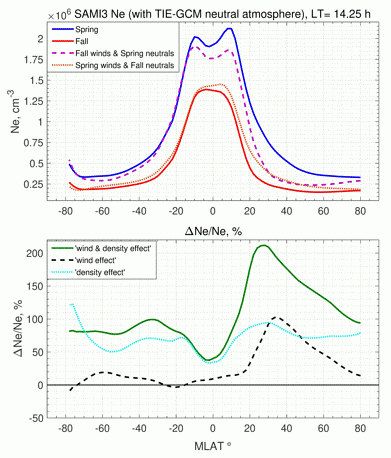
Equinoctial Asymmetry in the Upper Ionosphere: Comparison of Satellite Observations and Models
Authors L. Lomidze, D. J. Knudsen, M. Shepherd, J. D. Huba, and A. Maute observe that the terrestrial ionosphere displays significant equinoctial asymmetry despite the upper atmosphere receiving similar levels of solar ionization energy at a given location and local time in spring and fall during similar solar activity conditions. Satellite analysis data and model simulations provide better insights into the atmosphere-ionosphere coupling processes.
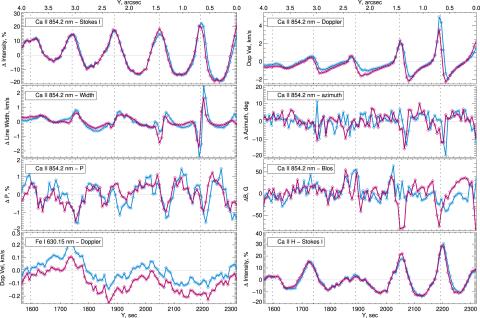
First Observation of Chromospheric Waves in a Sunspot by DKIST/ViSP
R. French, T. Bogdan, R. Casini, A. de Wijn, and P. Judge interpret the first observation by DKIST/VISP of Chromospheric Waves and observe in detail a steady umbral flash near the center of a sunspot umbra. They also find evidence for rarefaction waves situated between neighboring wave train shocks.
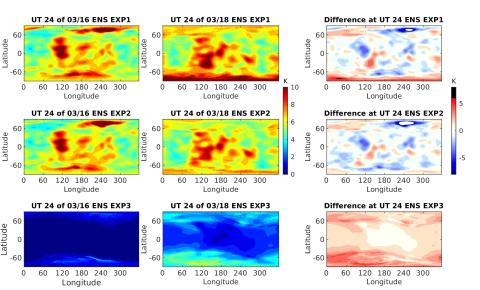
Effects of Forcing Uncertainties on the Thermospheric and Ionospheric states during geomagnetic storm and quiet periods
Understanding the sensitivity of the thermosphere and ionosphere to forcing uncertainties under different geomagnetic conditions is critical for space weather predictions. Chih-Ting Hsu and Nicholas Pedatella use WAXXM-X, with various kinds of forcing perturbation, to evaluate the upper atmosphere's response to the uncertainties of different forcings. The lower atmospheric wave and tide forcing uncertainties, and high-latitude electric potential uncertainty are addressed.
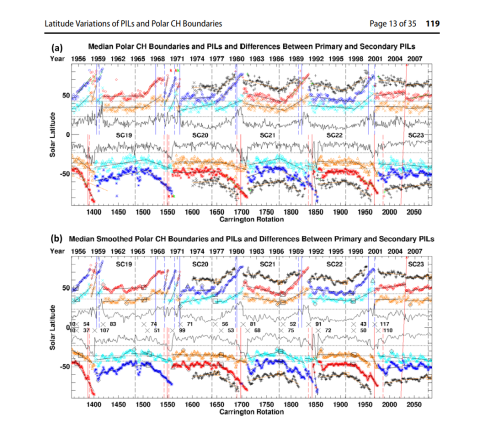
Latitude Variations in Primary and Secondary Polar Crown Polarity Inversion Lines and Polar Coronal Hole Boundaries over Five Solar Cycles
B. A. Emery, D. F. Webb, S. E. Gibson, I. M. Hewins, R. H. McFadden, and T. A. Kuchar undertake a five solar-cycle (SC 19 - 23) ≈55-year (December 1954 to August 2009) study of the high latitude polarity inversion lines (PILs) using the recently digitized McIntosh Archive (McA) of solar synoptic (Carrington) maps. They observe hemispheric differences in the "Rush to the Poles" (RttP.)

Temperature of a long-lived solar coronal cavity
Urszula Bąk-Stęślicka, Sarah E. Gibson, Marek Stęślicki analysed a long-lived coronal cavity observed from 17 March 2012 to 21 March 2012 applying a differential emission measure method to obtain both a temperature distribution and the average temperature over all five observational days.
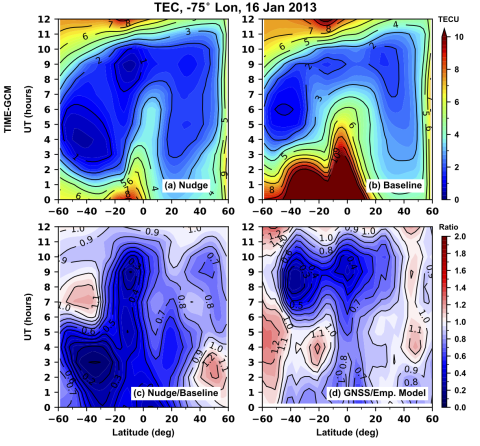
Understanding nighttime ionospheric depletions associated with sudden stratospheric warmings in the American sector
N. M. Pedatella et. al. focus on understanding what drives the previously observed deep nighttime ionospheric hole in the American sector during the January 2013 sudden stratospheric warming (SSW). Performing a set of numerical experiments with TIME-GCM they demonstrate that this nighttime ionospheric hole was the result of increased poleward and down magnetic field line plasma motion at low and midlatitudes in response to altered F-region neutral meridional winds.
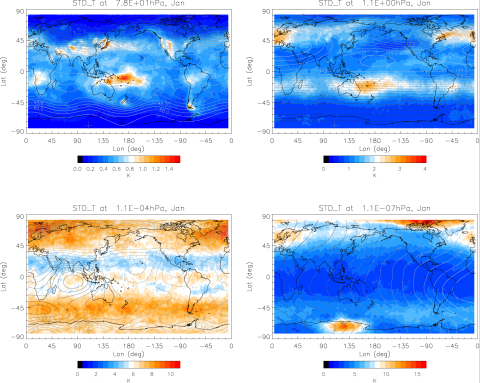
Thermospheric and Ionospheric Effects by Gravity Waves from the Lower Atmosphere
Han-Li Liu, Peter H. Lauritzen, Francis Vitt, and Steve Goldhaber have developed a high-resolution whole atmosphere model (WACCM-X), which extends from the Earth surface to the upper thermsophere, that can partially resolve the small scale waves (gravity waves.) The simulated waves are compared with available observations to verify the model results and to examine how these waves are distributed geographically and over altitudes.
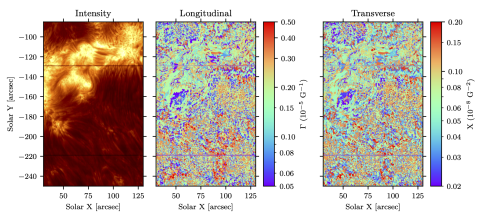
Derivation of Instrument Requirements for Polarimetry using Mg, Fe, and Mn lines between 250 and 290 nm
A.G. de Wijn, P.G. Judge, R. Ezzeddine, A. Sainz Dalda recently argued that a region of the solar spectrum in the near-UV between about 250 and 290 nm is optimal for studying magnetism in the solar chromosphere due to an abundance of Mg II, Fe II, and Fe I lines that sample various heights in the solar atmosphere.
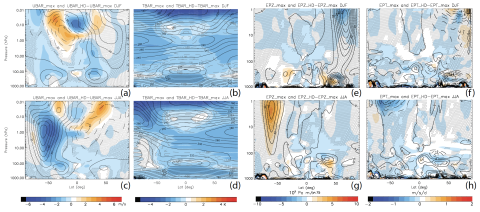
Climate responses under an extreme quiet sun scenario
Han-Li Liu, Matthias Rempel, Gokhan Danabasoglu, Stanley C. Solomon, and Joseph M. McInerney tackle the problem of clearly identifying solar signal from the very large climate variability on broad time scales. Providing a lower bound of the solar minimum condition according to current understanding of solar physics and specifying the extremely low solar minimum condition in a climate model that considers the effects of ocean and middle atmosphere, they identify significant climate responses.